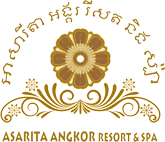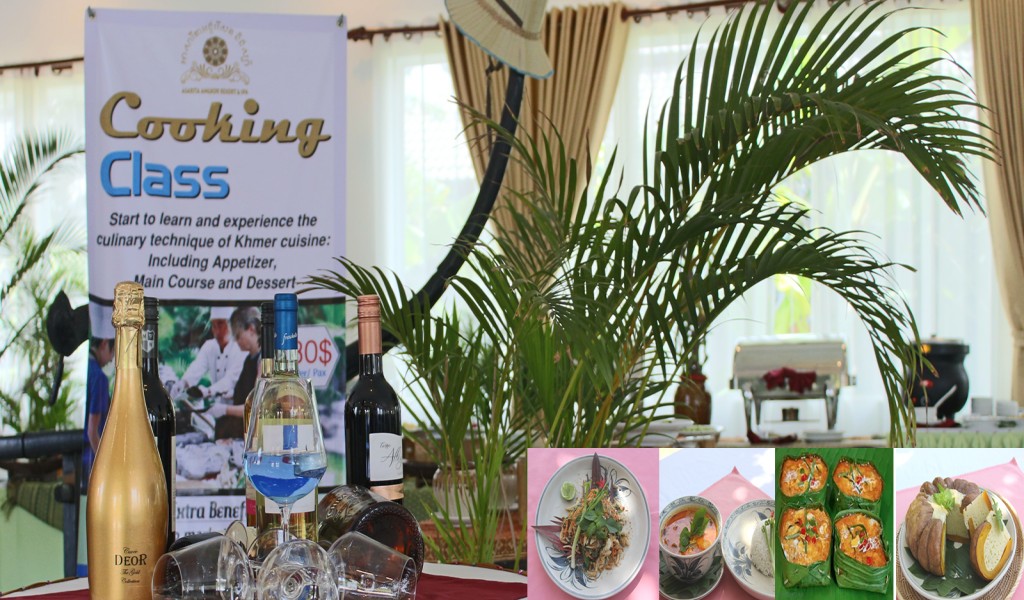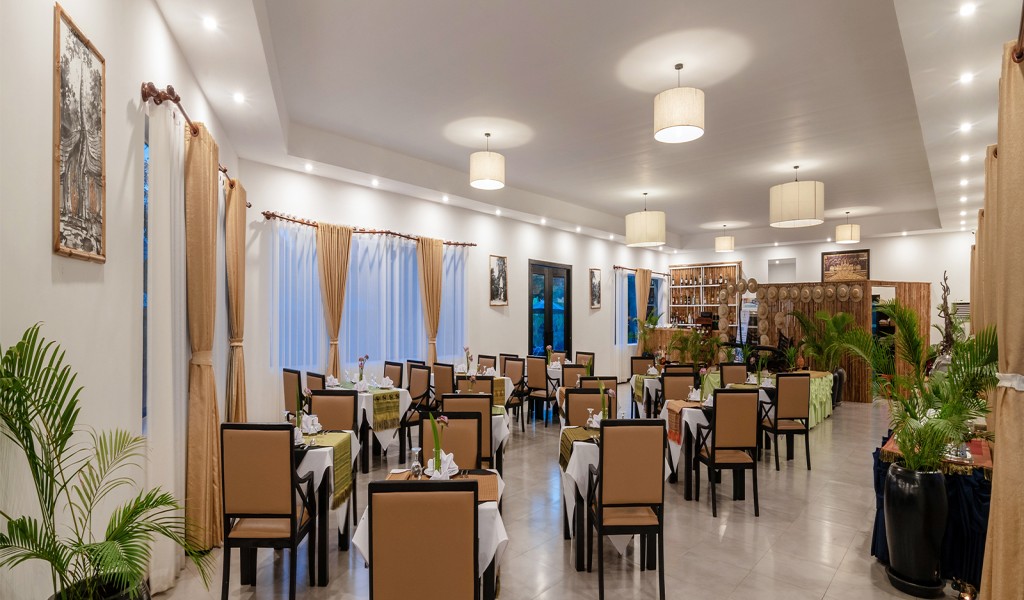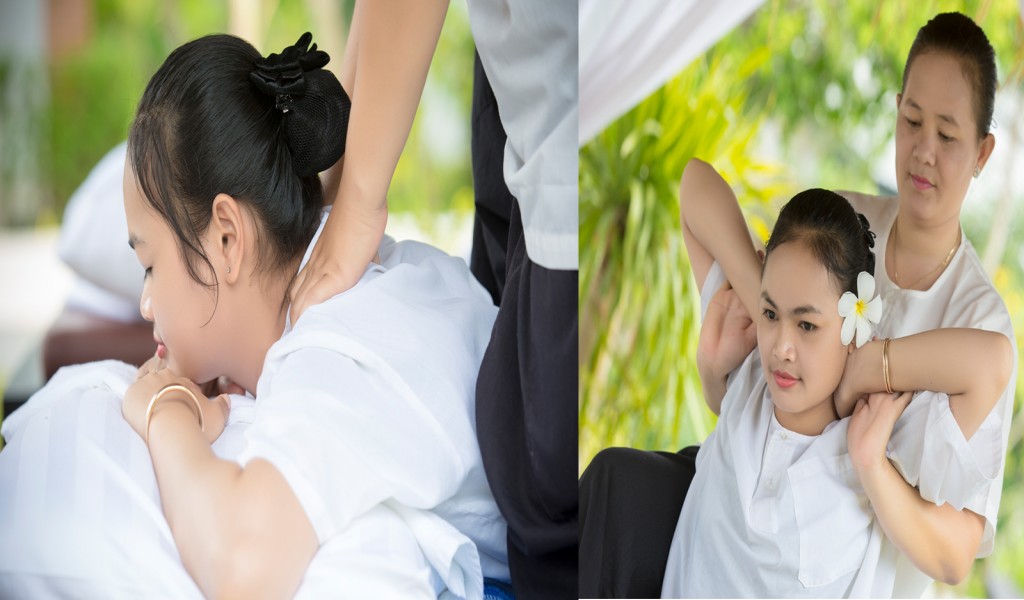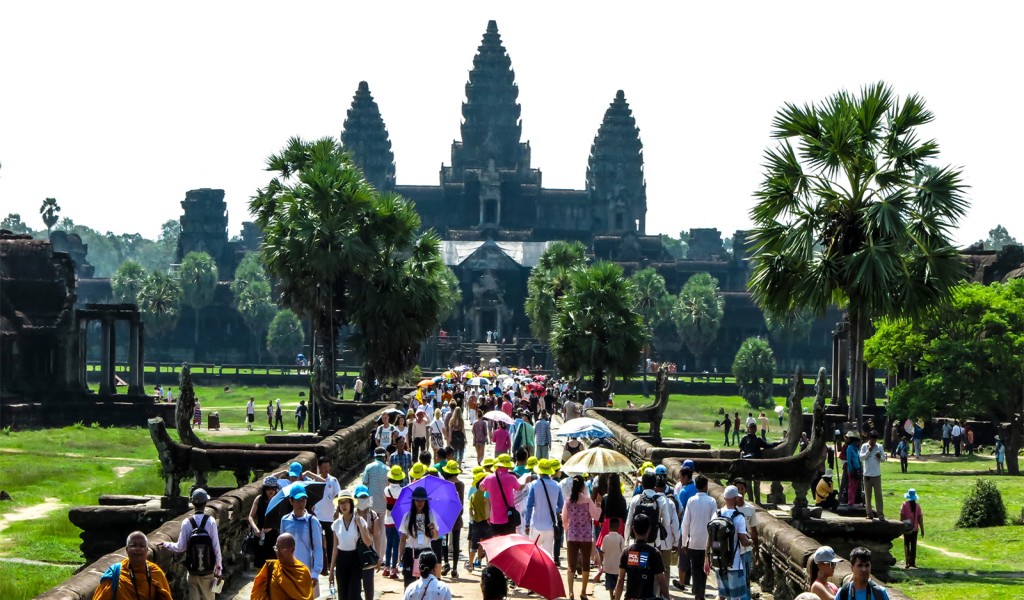The Kingdom of Cambodia is formerly Kampuchea, we are a Southeast Asian nation that borders Thailand, Laos, Vietnam, and the Gulf of Thailand. The capital city is Phnom Penh.
-
More Details
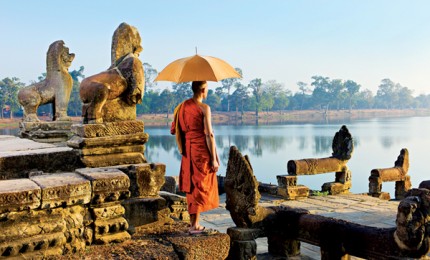 Geography
GeographyThroughout Cambodia's history, religious principles guided and inspired its arts. A unique Khmer style emerged from the combination of indigenous animistic beliefs and the originally Indian religions of Hinduism and Buddhism. These two religions, along with the Sanskrit language and other elements of Indian civilization, arrived in mainland Southeast Asia during the first few centuries ad. Seafaring merchants following the coast from India to China brought them to the port cities along the Gulf of Thailand, which were then controlled by the state of Funan in Cambodia. At varying times, Cambodian culture also absorbed Javanese, Chinese, and Thai influences. Between the 9th and 15th centuries, a prosperous and powerful empire flourished in northwestern Cambodia. The Khmer kingdom of Angkor, named for its capital city, dominated much of what is now Laos, Vietnam, and Thailand. The kingdom drew its religious and political inspiration from India. The literary language of the court was Sanskrit; the spoken language was Khmer. Massive temples from this period, including Angkor Wat and the Bayon at Angkor Thum, testify to the power of Angkor and the grandeur of its architecture and decorative art. The unparalleled achievements in art, architecture, music, and dance during this period served as models for later cultural development in Cambodia. Angkor faded into obscurity after the capital moved south to Phnom Penh in the 15th century, probably due in part to frequent invasions by the neighboring Thais. The jungle rapidly grew over the monuments. In the centuries that followed, frequent wars reduced the territory, wealth, and power of Cambodian monarchs. However, an independent state with its capital near Phnom Penh survived until the 19th century. The most important work of Cambodian literature, the Reamker (a Khmer-language version of the Indian myth of the Ramayana), was composed during this time. France, which began administering Cambodia in 1863, rediscovered the temples at Angkor and worked to preserve them beginning in the early 20th century. Cambodia's traditional culture and the monuments of Angkor were endangered between 1970 and 1990 due to civil war. The Communist Khmer Rouge regime, which opposed and mistrusted religion and education, banned all of Cambodia's traditional arts and its written language. Since 1991, when Cambodia's warring factions signed a peace accord, international organizations have helped the Cambodian government restore the sites at Angkor and revive Cambodia's traditional crafts.
 Close
Close
-
More Details
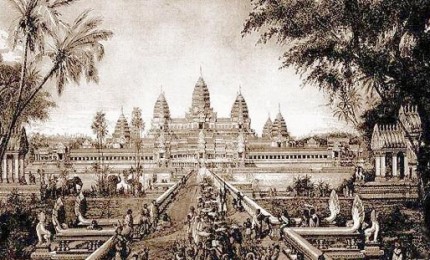 History
HistoryNo one knows for certain how long people have lived in what is now Cambodia, as studies of its prehistory are undeveloped. A carbon-l4 dating from a cave in northwestern Cambodia suggests that people using stone tools lived in the cave as early as 4000 bc, and rice has been grown on Cambodian soil since well before the 1st century ad. The first Cambodians likely arrived long before either of these dates. They probably migrated from the north, although nothing is known about their language or their way of life. By the beginning of the 1st century ad, Chinese traders began to report the existence of inland and coastal kingdoms in Cambodia. These kingdoms already owed much to Indian culture, which provided alphabets, art forms, architectural styles, religions (Hinduism and Buddhism), and a stratified class system. Local beliefs that stressed the importance of ancestral spirits coexisted with the Indian religions and remain powerful today. Cambodia's modem-day culture has its roots in the 1st to 6th centuries in a state referred to as Funan, known as the oldest Indianized state in Southeast Asia. It is from this period that evolved Cambodia's language, part of the Mon-Khmer family, which contains elements of Sanskrit, its ancient religion of Hinduism and Buddhism. Historians have noted, for example, that Cambodians can be distinguished from their neighbors by their clothing - checkered scarves known as Kramas are worn instead of straw hats. Funan gave way to the Angkor Empire with the rise to power of King Jayavarman II in 802. The following 600 years saw powerful Khmer kings dominate much of present day Southeast Asia, from the borders of Myanmar east to the South China Sea and north to Laos. It was during this period that Khmer kings built the most extensive concentration of religious temples in the world - the Angkor temple complex. The most successful of Angkor's kings, Jayavarman II, Indravarman I, Suryavarman II and Jayavarman VII, also devised a masterpiece of ancient engineering: a sophisticated irrigation system that includes barays (gigantic man-made lakes) and canals that ensured as many as three rice crops a year. Part of this system is still in use today.No one knows for certain how long people have lived in what is now Cambodia, as studies of its prehistory are undeveloped. A carbon-l4 dating from a cave in northwestern Cambodia suggests that people using stone tools lived in the cave as early as 4000 bc, and rice has been grown on Cambodian soil since well before the 1st century ad. The first Cambodians likely arrived long before either of these dates. They probably migrated from the north, although nothing is known about their language or their way of life. By the beginning of the 1st century ad, Chinese traders began to report the existence of inland and coastal kingdoms in Cambodia. These kingdoms already owed much to Indian culture, which provided alphabets, art forms, architectural styles, religions (Hinduism and Buddhism), and a stratified class system. Local beliefs that stressed the importance of ancestral spirits coexisted with the Indian religions and remain powerful today. Cambodia's modem-day culture has its roots in the 1st to 6th centuries in a state referred to as Funan, known as the oldest Indianized state in Southeast Asia. It is from this period that evolved Cambodia's language, part of the Mon-Khmer family, which contains elements of Sanskrit, its ancient religion of Hinduism and Buddhism. Historians have noted, for example, that Cambodians can be distinguished from their neighbors by their clothing - checkered scarves known as Kramas are worn instead of straw hats. Funan gave way to the Angkor Empire with the rise to power of King Jayavarman II in 802. The following 600 years saw powerful Khmer kings dominate much of present day Southeast Asia, from the borders of Myanmar east to the South China Sea and north to Laos. It was during this period that Khmer kings built the most extensive concentration of religious temples in the world - the Angkor temple complex. The most successful of Angkor's kings, Jayavarman II, Indravarman I, Suryavarman II and Jayavarman VII, also devised a masterpiece of ancient engineering: a sophisticated irrigation system that includes barays (gigantic man-made lakes) and canals that ensured as many as three rice crops a year. Part of this system is still in use today.
 Close
Close
-
More Details
 Currency
CurrencyCambodia has recently emerged as a one of the most popular tourist destinations in world and a peek into the Cambodia Overview will make things clear. Cambodia is a kingdom in Southeast Asia with a population of almost 15 million people, with Phnom Penh being the capital city. This country was once the seat of the once powerful Hindu and Buddhist Khmer Empire, which ruled most of the Indochinese Peninsula between the eleventh and fourteenth centuries. The country has Thailand as a neighbor to its west and northwest, with Laos to its northeast, and with Vietnam to its east and southeast. In the south it faces the Gulf of Thailand. The official currency of Cambodia is used less often than US dollars. It is often jokingly said the "real" currency of Cambodia is the US dollar. In fact if you are staying in Phnom Penh or visiting Angkor you can pay for almost all goods in US dollars. The actual currency of Cambodia is riel. There have been two distinct issues of riels in the history of currency at Cambodia. The first time it was issued was between 1952 and 1975. The second time it was issued was in 1980. The country has no monetary system between 1975 and 1980 i.e. there was no riel or any kind of currency in Cambodia during this time period. In the past the currency of Cambodia had also come out in Cambodian tical and Cambodian franc versions. When the currency of Cambodia, riel, was re-established in 1980 it was valued at 4,000 riels = 1 US dollar. It is subdivided into 10 kak or 100 sen. Later issues of banknotes went up to 100,000 riels. However, due to low prices in Cambodia, currency in Cambodia above 20,000 riels is rarely seen. The currency of Cambodia is today used mainly for buying local produce and other merchandise. The US dollar, especially the one-dollar bill, is very prevalent throughout Cambodia for almost all purposes and is often preferred to the riel, earning the tag of unofficial second currency in Cambodia.
 Close
Close
-
More Details
 Population
PopulationAn estimated 85-90 percent of the population lives in rural areas. Ethnically the population consists of about 90 percent Khmer, 5 percent each of Chinese and Vietnamese and small numbers of hill tribes (Chams and Burmese). Khmer is the country's official language. It is spoken by more than 95 percent of the population. French, as a second language Ian a is also spoken, mostly by older people. English is more commonly spoken by the younger generation. The Cambodian population presents several important features. First, due to the baby' boom after 1979, it is a young population with at least half (50% according to some sources, more according to others) under 18 years of age now. Secondly, the proportion of women in the adult population is high, 56% of those who are 18 years old or more being females. Also as a result of the war, there is a rather high proportion of women-headed household; at least 25% according to UNICEF. Cambodia and Laos' populations are dwarfed by those of Vietnam and Thailand, and average population densities in the smaller countries are much lower than in Vietnam. Even the very densely populated areas in Cambodia do not have such a concentration of population as can be found in the Red River and Mekong River Deltas in Vietnam. The population of Cambodia is 12,491,501 (2001 estimate). Population growth per year is estimated at 2.3 percent, one of the highest rates in Asia. The rate of infant mortality is also high. The population density is 69 persons per sq km (179 per sq mi), with the densest concentrations on the heavily cultivated central plain. The mountainous regions of the country, where malaria is widespread, are thinly populated, as are the poorly watered northern provinces. During the late 1970s, under the brutal rule of the Khmer Rouge, all of Cambodia's towns were depopulated, and residents were forcibly relocated to rural areas. A process of reurbanization began in the 1980s. Resource from: www.cambodia.gov.kh
 Close
Close
-
More Details
 National Flower
National FlowerThe romduol, a small yellowish-white flower, is the national flower of the Kingdom of Cambodia. Since ancient times, Cambodian women have often been compared to the Romduol flower because of its attractive fragrance; a unique scent that is prominent in the late afternoon and can travel over long distances with the wind. With its sturdy stems that measure up to 30cm, the Romduol plant can grow to a height of 12 meters. These plants are being planted to enhance public parks.
 Close
Close



